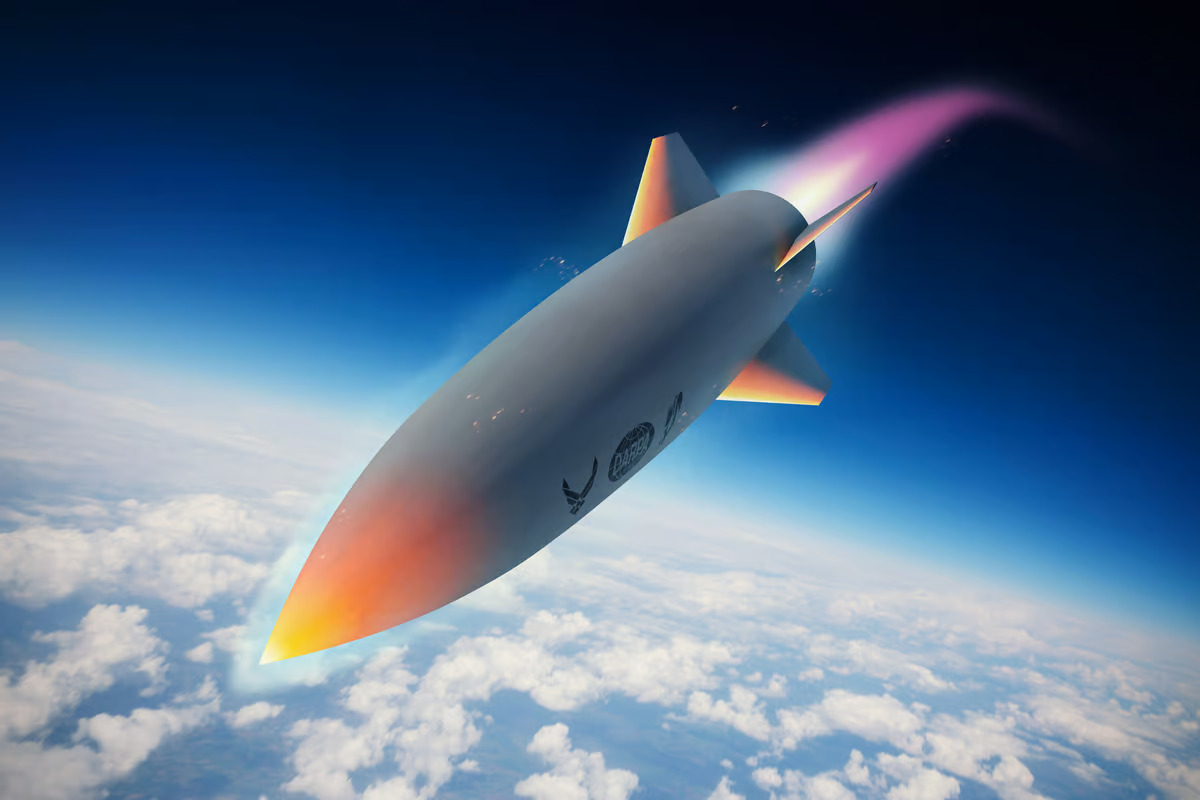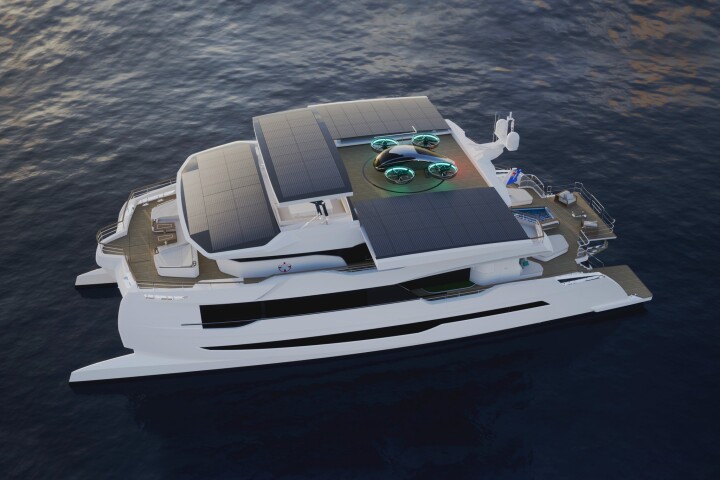 Artist’s concept of the Lockheed Martin hypersonic missile. Lockheed Martin
Artist’s concept of the Lockheed Martin hypersonic missile. Lockheed Martin
–
This month’s test flight was a joint venture by DARPA, the US Air Force, the Air Force Research Laboratory (AFRL), Lockheed Martin, and Aerojet Rocketdyne. As in the previous two test flights, the vehicle consisting of a solid rocket motor booster, a glider protective shroud, and a glider vehicle containing a kinetic-energy projectile warhead was dropped from a B-52H Stratofortress bomber.
After deployment, the booster automatically fired, boosting the glider to supersonic speeds, after which a scramjet engine took over, accelerating the glider to over five times the speed of sound as it reached an altitude of over 60,000 ft (18,288 m).
According to Lockheed, the test doubled the data on the scramjet engine used to power the missile, which is one of two versions being considered by the US Air Force. The other is being developed by Raytheon. The data will be used to improve the technology and widen the performance envelope before the next phase of three test flights where the missile will be equipped with a live warhead.
“The HAWC program created a generation of new hypersonic engineers and scientists,” said Andrew “Tippy” Knoedler, the HAWC program manager. “HAWC also brought a wealth of data and progress to the air-breathing hypersonic community. The industry teams attacked the challenge of scramjet-powered vehicles in earnest, and we had the grit and luck to make it work.”
























